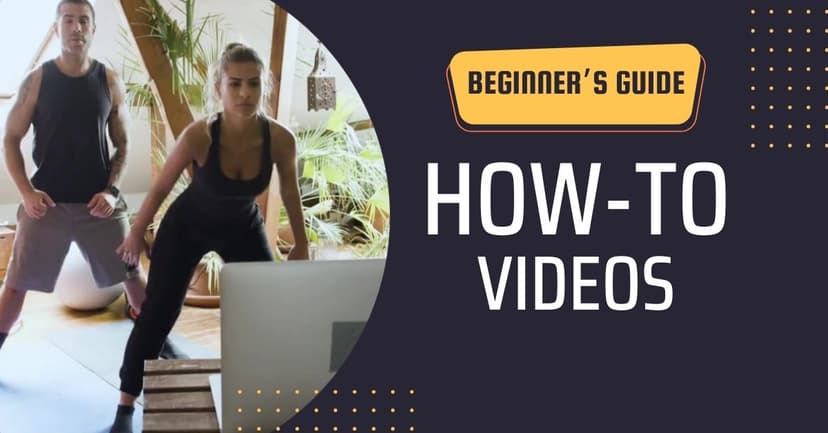Is your website accessible to all users? Learn from these ten tips on how to improve website accessibility to gain more business today!
For nearly a dozen years, the world has been celebrating the Global Accessibility Awareness Day.
Every third Thursday of May, humankind joins with tech companies and internet experts to ensure EVERYONE can access websites, social media, videos, audio, and other digital content, regardless of physical limitations, health conditions, and other factors.
Two in three people worldwide use the internet to learn, entertain, communicate, engage, form friendships and relationships, do business, and other 21st-century activities.
That is a whopping 5.35 billion people you can leverage to boost sales and generate unimaginable revenues.
So, how do you ensure five billion people can access your website? Hold onto your couches because we will share 10 ways to boost website accessibility and watch followers, customers, and revenues grow.
How to Improve Your Website’s Accessibility

1. Use high-quality AI videos
Nearly 21 in 25 online users prefer videos to plain text.
That says a lot.
Videos stir emotions more quickly than written words, allowing viewers to instantly feel the “pinch” in their hearts.
You can cater to people with difficulty reading, including folks with dyslexia and similar health problems.
You don’t need a Hollywood-worthy rig to create a stunning video.
AI video creators exist.
For example, Puppetry doesn’t demand expensive equipment and extended and complicated editing processes to produce compelling videos.
You can improve website accessibility without spending a fortune.
2. Add alt-text to pictures or images
Some internet users or digital content consumers cannot view images or videos.
For example, folks who rely on Braille output devices and screen readers need written words to understand the message. Alt-tags describe the image and enable internet users to appreciate your content.
Adding the correct “alt-text” to your images can make website more accessible to nearly everyone.
Moreover, Google will assign a higher SEO score for your website.
It should help boost your ranking on SERPs and open more opportunities for increased URL exposure.
3. Observe proper headings (and subheadings)
Can you imagine a 2,000-word blog without subheadings?
It would be like reading a novel. And while some love Sydney Sheldon-like articles, the average internet user doesn’t.
Subdividing your blog posts into sizeable chunks shows organization – a trait Google values highly.
Moreover, adding H2, H3, and H4 headings helps screen readers to navigate your website more easily. After all, subheadings are a page’s outline.
4. Choose a CMS with excellent support for web accessibility
Content management systems (CMS) empower website owners to create, modify, and manage digital content without requiring technical expertise.
You don’t need a website designer or developer to organize and run your company’s website content.
Ideally, you will want a CMS platform with exceptional web accessibility support.
For example, it must have plugins, themes, widgets, page layouts, and other elements, allowing for increased accessibility and inclusivity.
5. Be descriptive with link titles
Just as alt-tags can help some web users appreciate your website’s images, so do link titles.
Nobody wants to click a link that opens to a suspicious landing page.
Everyone requires assurances that links are safe.
Adding descriptive titles to links helps website visitors know the link’s purpose and where clicking will redirect them. Users can choose whether to proceed.
6. Use colors wisely

Did you know that one in 12 men cannot distinguish colors or see images only in shades of gray?
Although the number of color-blind women is lower than men (only 1 in 200), over 300 million people cannot appreciate the vivid colors we do.
This statistic has significant implications for website owners.
Although adding a splash of bright and lively colors to your site can attract many potential customers, some might not appreciate them.
You might want to check Google extensions that allow you to see images in the eyes of a color-blind person. Tweak your content accordingly to improve accessibility.
7. Design web forms carefully
Companies recognize the value of email marketing in improving customer relations, widening reach, and boosting lead generation.
Unsurprisingly, brands have digital forms.
Customer feedback, service requests, and other actions are also more convenient with forms.
You will want forms to be accessible to everyone.
Text fields must have descriptive titles.
For example, you can put “Your Name” instead of “Name” only to make the form more personal. “What’s the purpose of your message?” is also better than a simple “Purpose.”
8. Make your site navigable by keyboard
Desktop computers and laptops have input devices facilitating seamless website navigation.
Unfortunately, built-in trackpads and connected mouses can fail. Getting from one page to another can make web browsing very inconvenient.
You will want your website to be keyboard-friendly.
Users should be able to use arrow keys, tabs, and keyboard shortcuts to navigate across web pages. It should also support alternative user input devices, including single switches and mouth sticks.
9. Make dynamic content more accessible
How to make websites more accessible?
You can talk with your web developer to ensure the seamless integration of Accessible Rich Internet Applications (ARIA) protocols.
This technology allows adding or updating webpages without refreshing the latter. It results in better access to fresh content.
Moreover, using text alternatives and closed captions on GIFs and videos can make your content more accessible to folks with visual or hearing difficulties, respectively.
For instance, a Puppetry AI-generated video can be more accessible with automatic captioning for internet users with hearing impairment.
10. Describe video content
Although four in five people love videos, some cannot because of visual impairment.
They cannot see the colors and movements in your brand-boosting visual content. What do you do?
What you lack in visuals can be reinforced with equally engaging audio.
That’s where a carefully crafted video script can be helpful. You can use artificial intelligence to create compelling script-based narrations.
Some platforms, like Puppetry, let you record and upload audio for the AI avatar. Experts call it an audio description.

Final Thoughts
An accessible business website translates to a broader audience.
People with visual and hearing impairments and other physical limitations can enjoy your content as much as most.
Website accessibility lets you leverage user experiences and increases your chances of converting visitors into customers. And that translates to more business opportunities.
Try Puppetry today!


